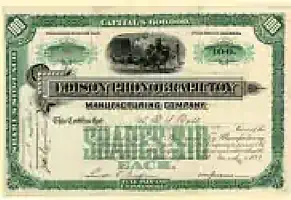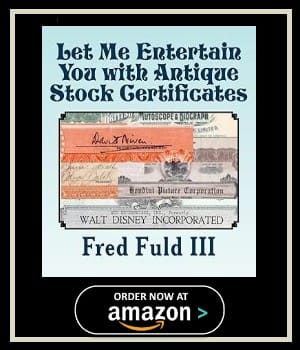
Scripophily
What Is Scripophily?
Scripophily is the study and collection of antique stock and bond certificates. As a hobby, it explores financial history through the lens of printed documents once used by corporations, banks, and governments. These items were physical representations of equity, ownership, and credit—each with its own story. From ornate borders to rare signatures, many certificates reflect the aesthetic values and economic conditions of their time. Consequently, collectors appreciate both their visual charm and historical relevance.
Artistry and Design Elements
Financial certificates often feature intricate engravings, allegorical figures, and elaborate typography. These design choices were not merely decorative—they conveyed prestige and trust in the issuing entity. For example, railroads frequently used bold imagery to symbolize speed and industrial power. Some items were printed in full color or embossed with corporate seals, turning otherwise mundane documents into visual art. That’s part of the appeal for collectors: each piece blends economics with creative expression.
Historical Insights and Market Trends
Collecting these certificates offers insight into past industries and shifting economies. By examining issued dates, signatures, and mergers, hobbyists can trace business evolution over decades. Additionally, global events—such as wars, recessions, or technological booms—often shaped what companies issued and when. Market interest in rare certificates tends to rise as financial nostalgia gains traction. As more collectors discover this niche, auction values and curated collections steadily grow.
Collector Appeal and Notable Signatures
For many, the thrill lies in uncovering rare autographs. Signatures from influential leaders—presidents, tycoons, inventors—can appear on original stock documents. These names add provenance and historical weight, making each find more exciting. Additionally, certificates linked to iconic companies like Standard Oil or Pan American Airways attract attention from both investors and historians.
Why Scripophily Matters
This unique hobby brings together finance, design, and storytelling. Whether you’re drawn by the artwork, the signatures, or the historical context, collecting antique certificates opens a window into another era. It’s more than paper—it’s heritage preserved.
Researching the History Behind Certificates
One of the key aspects of collecting scripophily is the art of researching the history concealed within these certificates. This research entails the exploration of the company or entity that issued the certificate, its financial trajectory, and any significant events or transformations that occurred during its existence. Some collectors narrow their focus to specific themes, such as certificates from a particular industry, region, or time period. Furthermore, scripophily extends beyond mere collection, often involving buying and selling certificates as a form of investment. The value of these certificates can fluctuate considerably, influenced by factors such as rarity, condition, historical significance, and demand among collectors. Certificates from renowned or historically significant companies can be exceptionally valuable, while others may hold little worth beyond their aesthetic allure.
Beyond Certificates: Expanding Collections
In addition to collecting stock and bond certificates, scripophily encompasses a broader spectrum of related items, enhancing its allure. Collectors may seek out autographs of notable business figures, financial documents, and ephemera linked to securities and finance, thereby enriching their collections. However, like any collecting hobby, scripophily necessitates a substantial foundation of knowledge, thorough research, and careful consideration of various factors when acquiring certificates. Authenticity, condition, and provenance become pivotal factors in assessing the value and historical significance of the certificates. It’s imperative for collectors to be aware of the potential risks and challenges associated with this hobby, particularly the existence of counterfeit or fraudulent certificates in the market.









 '
' 




